John Adams

2nd President of the United States of America
-----------
“Today in History”
On October 30, 1735, the second president of the United States, John Adams, was born in Braintree, Massachusetts
-----------
Vast library, thoughts of John Adams displayed
By Brian MacQuarrie, Globe Staff
September 22, 2006
In the pantheon of Founding Fathers, John Adams is usually considered an also-ran. There is no memorial to him in Washington, no portrait of him on US currency, no singular achievement that is drilled into the heads of schoolchildren from Maine to California.
But opening today at the Boston Public Library is the first public exhibition of the second president's vast personal library, a priceless collection of 3,802 works whose breadth helps show why this Braintree farmer is gaining recognition as one of the true American giants.
Not only will the public be able to see the entire collection for the first time, but dozens of Adams's books have been laid open in glass cases to display the notes, musings, and commentaries he wrote in the margins of nearly everything he read. The free exhibit will continue until April, but the library already has embarked on a years-long project to digitize the books for public study on the Internet.
``God bless the man," said Beth Prindle, curator of the John Adams collection. ``It seems that a thought never trickled through his mind that he didn't write down."
Scholarly and scathing, catty and conversational, Adams's writings show strong opinions on many of the great events, leaders, and debates of his day.
``Not one of the Projects of the Sage of La Mancha was more absurd, ridiculous or delirious than this of a Revolution in France," Adams wrote in 1812 in the margins of Mary Wollstonecraft's ``Historical and Moral View of the French Revolution." In that book, whose author Adams alternately called ``a Lady of a masculine masterly Understanding" and ``this foolish Woman," the former president penned 10,000 words of analysis.
There's a forensic map, drawn by Paul Revere, that Adams used at trial in his defense of British soldiers in the Boston Massacre. And there's his personal atlas, published in Paris in 1778, that shows his native Massachusetts in careful, stunning detail.
David McCullough, the historian who wrote a Pulitzer Prize-winning biography of Adams, said the exhibit is of great national importance.
``John Adams was the most widely and deeply read American of his day, and there are his books!" said McCullough, who used the Boston Public Library, which has held the Adams collection since 1894, to research his biography. ``This is one of the most important Americans in our history, a man who was never wealthy, who believed in education, who was himself transformed by education, and who never lost his love of learning."
From his personal copy of the first printing of the US Constitution to the first Koran printed in the United States, the books show the staggering scope of Adams's intellectual interests and his impact on the nation's democratic experiment. The notes from Adams's pen are vivid evidence of that mind at work.
``His marginal notes are not the kinds of notes that most of us would make," McCullough said. ``They are conversations with the author, and there are some 50 different figures from the 18th century of huge consequence with whom he's having these conversations. . . . It's thrilling to sit there and listen to that conversation, to that effect."
Before this exhibit, the Adams library was kept largely out of public view in the rare books collection, accessible only to researchers willing to review individual books in near-seclusion. The researchers also had to know what to look for.
Now, with 30 volumes digitized from the Adams collection, an ambitious project has been launched to put as many of the president's books on the Internet as funding and technology will allow. The plans also include an electronic cross-referencing of Adams's reflections. .
Vivian Spiro, chairwoman of the board of directors of the Associates of the Boston Public Library, hopes the exhibit will kindle a love of learning for learning's sake in the public.
``I hope they will be inspired . . . by the fact that a man of modest origins, whose mother was illiterate and whose father was a laborer, went on to become one of the writers of the Constitution," Spiro said.
-----------
My thoughts on John Adams: A perspective of a good man in a new America
By Jonathan A. Melle on May 26th, 2006
John Adams’ life and faithful service to “Independence Forever”, which were his last written words to the American People, epitomized the humanitarian values of the late 18th Century. Like an “Oak Tree” in his will and spirit of Patriotism, our nation’s 2nd U.S. President was the strongest voice for the self-determination of the people’s will to have an Independent American Government free of British monarchy, colonialism and tyranny. However, as good of a man that John Adams truly was during these trying times for the causes of Independence and Liberty, all of the Founding Fathers also showed themselves to be flawed from the hypocrisies of the social injustices of the times. In many ways, both John Adams and the spirit of 1776 are symbols of both our nation’s finest ideals and worst inequities. But to understand this good man who led the cause for American Independence, the proper contexts of the time, history and events are needed to show that John Adams was indeed a good man with valuable contributions to our Republic of “Checks and Balances” within a written Constitution that protects our God given natural rights to Freedom.
John Adams loved to talk, give lengthy speeches, and stand for just political causes. Like many privileged men of his time, he owned land and farmed produce for subsistence and sale. Among the men he would meet with, books and writings were commonalities.
John Adams in one word was ambitious. He would choose public service before his family. He cherished his wife Abigail, with whom he would write romantic correspondences to on his voyages to Philadelphia and Western Europe, whom he inarguably loved dearly. Abigail Adams was among the many invaluable women and supporting cast members to the Founding Fathers’ causes for Liberty. But the sad truth in the short time we all have on this beautiful planet Earth is that John Adams chose important political causes before his wife Abigail and his children. Thank God for his decisions, but I feel that family is far more important to humanity than political ambition. John Adams traded off many of his personal interests for the good of the United States of America.
During the Revolutionary Era, many traditional citizens were land-rich farmers, but very few were estate owners and wealthy. Indeed, it was the wealthy citizens, such as John Hancock, that fared the worst under British Colonialism and led the cause for Rebellion and the Revolutionary War. While John Adams was a member of the elite in Massachusetts, he is still a good example of a farmer catching the fever of Patriotism pushed forth by the truly powerful protestors of British Colonial rule.
The cause of the Revolutionary leaders was to have a say in London’s Parliament before King George III concerning economic issues, especially taxation. The King of Great Britain would not consent to such demands, and enforced the laws of his nation’s Parliament against his Colonial subjects. This left the Colonial subjects of the British Crown with no representation in their Parliament in London, and British Monarchy became the enemy to be conquered by Independence. The irony of the Revolutionary Leaders’ protest of British Monarchy was that their real protests were with the public taxation policies of the English Parliament, which had nothing to do with the King except that he enforced their will over that of the Colonialists. In many ways, King George III was more of a scapegoat for the Revolutionary Leaders than he was the true villain he was made out to be. Nonetheless, American Democracy was the cause to overthrow British Monarchy, and so the Revolutionary War began with “the shot heard around the World” in Lexington, Massachusetts in the Spring of 1775.
Christian religion was ingrained in the thoughts and minds of our Founding Fathers. When Adams was a teen at Harvard University in the early 1750s, he had to start each day at 6:00 A.M. in Church. By 1776, John Adams was 40 and he and his colleagues were convinced that God blessed their cause of Independence and His Divine influence would lead us to victory.
The Massachusetts Constitution was written by John Adams in 1779 and has the distinction of being the oldest functioning document of its kind known to man. Initially, John Adams’ work, and his naming the newly independent state “The Commonwealth of Massachusetts”, excluded freedom of religion. Many years later, Adams supported this ideal of freedom of religion for the protection of the commonwealth’s Jewish citizens, but the measure was defeated and freedom of religion would not become a reality in Massachusetts until 1833, which was well after his death in 1826. If John Adams contribution to the structure of American government could be summed up in three words, they are: “Checks and Balances.”
The Founding Fathers were Christian men, but they also struggled with our nation’s most disgraceful symbols of shame: SLAVERY, the subordination of women to men in Government, the expulsion of the native Indians, and, to a lesser extent, some Anti-Semitism. During the Revolutionary War, Thomas Paine published many pamphlets urging the people to support the cause of American Independence and the signing of the Declaration of Independence. In one case, the Continental Congress ordered Paine to edit out his claims of King George’s monarchial rule as being similar to the Jewish people’s betrayal of Jesus Christ at the Crucifixion. With the much-debated issue of Slavery, the Founding Fathers’ did not provide Freedom for all men. Indeed, only landowners, elite statesmen and wealthy merchants of white male European backgrounds were granted the blessings of Liberty. For the Founding Fathers, Slavery was a social injustice and was the decided outcome of the evils of British Colonialism and Monarchy in the states, but they were unresolved to abolish this cursed form of wickedness and iniquity. Moreover, the native Indians had no standing when it came to the practical tenets of Classical Liberalism. It was the belief of the Founding Fathers that native Indians must assimilate into their agrarian ways of life in order to survive under the new order. Lastly, but not least, John Adams, who disavowed Slavery, made no effort towards complying with the humorous demand of his wife Abigail to “Remember the Ladies” in the Declaration of Independence, or to include women as equals to men in American government. While William Shakespeare said there are many truths said in jest, John Adams jokingly replied to Abigail’s letter by saying that women already governed men in their homes.
A current historian whom I have come to admire is William M. Fowler, Jr. of the Massachusetts Historical Society. Fowler pointed out in a 12/5/05 “Boston Herald” Op-Ed Essay that in December of 1775 the citizens of Pittsfield, Massachusetts, which is my native hometown, wrote to the Provincial Congress to form a new government with a written Constitution for Massachusetts. The towns of Berkshire County, (which I helped to unsuccessfully defend against the abolition and centralized state takeover of her long-standing county government from 1996 – 2000 while my dad, Bob Melle, served as the last Chairman of the Berkshire County Commission), in 1775 –1779 argued to their Boston counterparts that the power of the government should be invested in the people. In September of 1779, John Adams of Braintree, which in part later became Quincy, answered the call from PITTSFIELD and BERKSHIRE COUNTY by writing the Constitution with such principles as the Declaration of Natural Rights that would be the framework of the U.S. Constitution’s Bill of Rights, among many other valuable similarities.
DANIEL SHAYS’ contribution a decade after the Declaration of Independence was just as valuable to our Republic as those of our Founding Fathers. Shays’ Rebellion did not have the support of Eastern Massachusetts politicians, including John and Abigail Adams or their distant cousin Samuel Adams. The reason why Colonial Massachusetts rebelled over 10-years prior to Western Massachusetts (Berkshire, Franklin, Hampshire,and Hampden Counties; and parts of Central Worcester County) under Daniel Shays’ Militia was because of the provincial colonial government’s high DEBTS. In the mid 1770’s, Revolutionary leaders such as Samuel and John Adams revolted against British Colonialism and Monarchy because London’s Parliament would not bail out Boston’s financial insolvency, but instead implemented unfair high taxes that further sent the Colonial Government into bankruptcy. This was not the policy of the vilified British King, except that King George III enforced the will of his Parliament instead of the will of the people in his British Colonies. The same themes that held true for the Boston political establishment in the mid-1770’s now were the very similar issues facing the Veteran Revolutionary Soldiers of Western Massachusetts in the mid-1780’s. In 1786, Western Massachusetts’ Farmers were petitioning their state government for financial relief from high taxes and poor business earnings from declining farming outputs. The Boston politicians of the time, including then State Senator Samuel Adams, gave the same unfair response they received from London’s Parliament, which were higher taxes for the already poor and destitute Western Massachusetts’ Farmers and Revolutionary War Veterans. Daniel Shays, who was a Captain in the Continental Army, and his Western Massachusetts militiamen were intent on burning the City of Boston and the State House to the ground for Boston’s betrayal and hypocrisy towards Western Massachusetts.
While Boston withstood the threat of Shays’ Rebellion by defeating his militias with mercenary militias of their own, our nation now had a call to national unity under a stronger and more powerful centralized Government. This calling led to the Philadelphia Constitutional Convention and the gathering of the most brilliant group of men ever assembled to draft the Charter of our Freedoms: The U.S. Constitution. This precious document was framed by John Adams’ penmanship of the Massachusetts Constitution that was drafted 7-years prior to the drafting of our U.S. Constitution. This great national document was left incomplete until 1791 when John Adams, as President of the U.S. Senate, would support the first 10 Amendments to the U.S. Constitution known as “The Bill of Rights.”
Under the U.S. Constitution, the nation’s central Government elected George Washington as her first President of the U.S.A. with John Adams as the Vice President. John Adams was not a true insider in President Washington’s cabinet, but he did show an unquestionable loyalty to his Chief that other members of the Washington Administration did not. Throughout time, from the late 18th through the early 21st Centuries, U.S. Presidents have had to struggle with betrayal by those that served in their administrations. John Adams strongest virtues were those of loyalty to his causes, newly formed Republic, and George Washington both as a military General and then U.S. President. As President of the U.S. Senate, John Adams always supported and voted for, in the case of a tie vote, more Executive Powers for the Presidency. Adams’ position in support of Presidential Power led to suspicions by his critics that he was both a monarchist and an Anglophile from his time in Great Britain as a U.S. Ambassador to the Royal Court. These aspersions were not so, but the truth was that John Adams wanted a stronger American President than the Constitution initially granted because he was next in the line of succession when George Washington stepped down. Adams was not a monarchist, nor was he pro-British in the Anglophile traditions of Government, but he was an elitist when it came to him making distinctions among the classes of the American People that the Constitution and newly formed Government served. The debates that Adams found himself in about the U.S. Constitution put in to practice are still being discussed and debated well over 200-year later from his time as Vice President in the 1790’s.
As our 2nd U.S. President, John Adams is the first to inhabit The White House in Washington, D.C. He is best known as the Father of the U.S. Navy and for remaining neutral in the volatile Affairs of Western Europe, especially in his successful policy of keeping peace with an ever changing and militaristic France. In hindsight, France’s threat to President John Adams was absurd. France basically told the U.S.A. that after it conquered Great Britain, a nation that has not been conquered at home since the 11th Century (and now stands undefeated for almost nearly 1,000 years in the year 2006), that we were next to be doomed by the then insanity of French control. Adams never had anything to fear because France would never defeat Great Britain in battle in the British homeland.
John Adams’ presidency was full of betrayal by his Cabinet and former-long-standing Revolutionary friend and current then Vice-President, Thomas Jefferson. Adams was the last of the Federalist Presidents and would see the national government become divided by factions or political parties. It was in these turbulent times and threats from France that John Adams, previously known both for his “Bill of Rights” in the Massachusetts Constitution and then his support for the Bill of Rights in the U.S. Constitution, signed into law what is known as the modern day 2001 “Patriot Acts” of the Bush II Administration, which were the “Alien and Sedition Acts” of 1798. Because the Constitution of the United States of America is supposed to be more than just a piece of paper, John Adams is one of two U.S. Presidents who, to this point in U.S. History, will be known to have trampled the civil rights and liberties of American Citizens and Citizens of the World. John Adams signing of the Alien and Sedition Acts was the worst mistake of his Presidency. These unconstitutional laws, like the unconstitutional “Patriot Acts” laws President George W. Bush signed in 2001 and still supports in 2006, stood against everything John Adams had once stood for, which is an important distinction one should note when comparing him to our current U.S. President who never supported the civil rights and liberties measures John Adams had supported earlier in his political career. Later in his life, and after his four-year term as U.S. President, John Adams admitted his error in signing these unconstitutional acts in a written correspondence he would share with then former-President Thomas Jefferson after 1811. John Adams had integrity for admitting his errors, which is something I pray George W. Bush will do in his future old age after his 8-year term as our 43rd U.S. President. The one commonality I judge between Presidents John Adams and George W. Bush is that deep down in their hearts and souls, I see two good men who have served and now serves as President of the U.S.A. and who believe they have done and are now doing what is best for our great nation.
The election of 1800 was the first, last, and only time a sitting U.S. President was opposed by a sitting Vice President. In this election, like all others after, political factions, mud slinging and baseless accusation of slander and libel were deployed to discredit the opposing candidates. While Thomas Jefferson won out against John Adams, he ended up tied in the Electoral College vote count with Aaron Burr, who would not cede the race to Jefferson. What is a striking point of Adams’ integrity, President Adams did not use this event to help himself and/or either Jefferson or Burr, as the decision now rested with the U.S. House of Representatives where Jefferson ultimately prevailed as the Third U.S. President. With the passing of the Presidential Torch from Adams to Jefferson, this marked the first peaceful transition of power after a victory against a sitting U.S. President. In the end of his long and noteworthy political career, John Adams showed a respect for the institutions he helped build by allowing the American Democratic Experiment to run its course with his passing into his golden years of retirement from public life.
For the next 25-years, John Adams would be retired from politics in his Quincy home known as “Peace Field”. On May 15th, 2006, I was able to tour this site and see first hand the paintings and aesthetically pleasing land John Adams called home, making my readings and research feel physically real and personally reverential for our Second U.S. President. Retired in Quincy, John Adams would see his son become a U.S. Senator, and then later a Secretary of State who would author the Monroe Doctrine, and ultimately the 6th U.S. President. Nothing made old John Adams happier than the successes of his good son John Quincy Adams in both politics and life.
John Adams knew his place in history would not be a glorious as his past political contemporaries, such as and especially Thomas Jefferson, and also George Washington and Benjamin Franklin. This made Adams bitter in his old age because he believed he deserved the respect and historical celebrations that would befall his Revolutionary Brothers in the Founding of the greatest nation on Earth: The United States of America. In hindsight, Adams was right about his place in U.S. History, but he also knew that he would be long remembered for his valuable contributions as well.
Despite his bitterness, which afflicts the personalities of many elderly people even in today’s world, John Adams lived his golden years of old age with a sense of contentment, happiness and dignity. Sadly, Adams would outlive his wife, daughter and one of his troubled sons. Yet, he himself was blessed with good health and longevity, and would not pass away until the exact day of the 50th Anniversary of the signing of the Declaration of Independence. Both John Adams and Thomas Jefferson lived until July 4th, 1826—a symbolic journey’s end to two very meaningful lives of two good and important men.
In closing, I believe John Adams was strong in character, reasoned with tempered passion in voice, a great leader in public service. To criticize his faults was much more the results of the context of history than the man himself. In hindsight, John Adams and our great nation all share the diminishing hypocrisies of the symbols of shame that come from our legacy of Government by self-determination, Freedom for all American Citizens and Citizens of the World, and the Natural Right to receive the Blessings of Liberty. In Adams’ life, he disavowed Slavery and came to fight for Freedom of Religion for his fellow Jewish Citizens. In many ways, John Adams symbolizes our nation’s long-standing struggle for Democracy for all Americans and peoples of the World.
In today’s political world, modern U.S. Presidents are more interested in building permanent partisan majorities instead of a Government for all Americans, catering to the wealthy multi-national corporations who do nothing more than outsource American jobs to faraway Continents like Asia in the name of a brave new world that prioritizes global capitalism over Natural Rights and Checks and Balances to Political Power, and dividing the World by using fear to lead instead of cultivating hope to empower. In the political world of John Adams, his distinction was to put America first instead of in a line for the benefit of military and corporate business interests.
John Adams’ leadership contributed to the Declaration of Independence and the ultimate defeat of British Colonialism and Monarchy on American Soil, the authoring of the Massachusetts Constitution with its democratic institutions of checks and balances, a “Bill of Rights” for the people in the commonwealth and then for the entire nation, and keeping America at peace and distant from European Politics. I strongly believe that if our modern U.S. Presidents went back to the classical leaders such as John Adams to reflect on their own public policies that is placing our great nation into strained alliances and colossal national debts that America would regain her true intent of serving the American People through self-determination, the rule of law, and a much greater prosperity for all American citizens than the great financial constraints we currently face as an aggregate. John Adams entrusted the governing of the American People to our democratic institutions, and put the American People first with good jobs and economic prosperity, which made our nation a symbol of greatness through Liberty, Freedom and Prosperity.
-----------
http://www.beantownbloggery.com/2007/11/letter-of-john-and-abigail-adams.html

Monday, November 19, 2007
Letters of John and Abigail Adams - Tonight
Are you a history buff? Or maybe a politics buff? Tonight, there will be a little bit of both at Fanuil Hall. The Massachusetts Historical Society and Harvard University Press is hosting a reading of the letters of John and Abigail Adams by Senator and Mrs. Ted Kennedy, Governor and Mrs. Deval Patrick, and former Governor and Mrs. Michael Dukakis.
Celebration of the publication of a new book of the letters of John and Abigail Adams. This is the first collection of their letters that is selected from the entire forty years span of their correspondence (which coincides with the most important period in American history) and includes several letters never before published.
The event takes place in Fanuil Hall at 7pm tonight. Bundle up, because it's cold out there today.
-----------
-

-
In a tax revolt, Massachusetts farmers fought back during Shays' Rebellion in the mid-1780s after The American Revolutionary War.
-
-----------
Sheffield, Massachusetts
"Shays' Rebellion will get a Web site"
By Jessica Willis, Berkshire Eagle Staff, 08/26/2008
SHEFFIELD — How did rebel forces in Western Massachusetts shape the fledgling U.S.government? How does a bloody last stand in a snowy cornfield on Sheffield Road in 1787 connect to the present day? Why did Daniel Shays' and hundreds of other displaced Revolutionary War veterans rise up in insurrection against the lawmakers and landowner élite?
A new Web site called "Shays' Rebellion and the Making of a Nation: From Revolution to Constitution" will give a detailed account of the conflict and connect it to the writing and eventual ratification of the U.S. Constitution.
The site, hosted by Springfield Technical Community College, is scheduled to launch Sept. 12, and will act as a lead-in to the 221st anniversary of the signing of the Constitution on Sept. 17.
According to one Sheffield-based historian, Shays' Rebellion did act as a spur for early reforms, and "established the need for strong government," instead of state-centered authority.
At the same time, the rebellion "was very much an economic event," said James R. Miller, whose 2002 book "Early Life in Sheffield" is an account of his town, up to the Civil War.
"Veterans were coming home (from the Revolutionary War), and they were disowned from their farms."
War debt and inflation had made the state's newly printed paper money worthless, and Massachusetts turned to heavy taxation to pay its debts.
As a result, many veterans had to liquidate their assets, and many ended up in debtors' prison.
One such veteran was the decorated Captain Daniel Shays of Pelham, described by Miller as a "reluctant leader" who was willing to take a stand because he felt he, and many others, had been "betrayed" by the government he fought for.
On Aug. 29, 1786, a group of "Shaysites" stormed the Northampton courthouse and stopped the imprisonment of debtors; insurgents closed the Great Barrington courthouse in Sept. 1786. In Jan. 1787, they clashed with militia at the Springfield Armory.
Other skirmishes ensued, but Shays' swan song took place in Sheffield, on Feb. 27, 1787, when four Shaysites were killed, and more than 30 were injured.
Shays fled to Vermont, and then to Canada, and then back to the states.
Two Berkshire County men named John Bly and Charles Rose were hanged; they were the only Shaysites to be executed for treason.
After his eventual pardon by Massachusetts Gov. John Hancock, Shays died, broke, in New York state in 1825.
To Great Barrington historian Bernard A. Drew, the morass of inflation, debt and property loss that sparked Shays' Rebellion has many parallels to modern American problems.
"The farmers were coming home and finding themselves in something not unlike (the current) subprime mortgage fiasco," Drew said.
Moreover, a Web site devoted to Shays Rebellion is valuable, particularly for those who live so close to where the battles took place.
"People learn more about history when they can attach it to something around them," he said.
The Shays Rebellion Web site address is www.shaysrebellion.stcc.edu
-
To reach Jessica Willis: jwillis@berkshireeagle.com, (413) 528-3660.
----------
www.shaysrebellion.stcc.edu
----------
-

-
Bryant White's Paintings Illustrating Shays' Rebellion
-

-
Portrait of Daniel Shays.
-

-
Portrait of Mary Harvey.
-

-
Portrait of Henry McCulloch.
-

-
Portrait of Moses Sash.
-
-----------
"Minor impact of Shays' Rebellion"
The Berkshire Eagle - Letters
Sunday, August 31, 2008
Jessica Willis' article on the forthcoming Shays' Rebellion Web site (August 26) mentions a few perceptions of that event which have been repeated over the years without much supporting evidence. The most commonly reported opinion is that the rebellion "established the need for strong government." Of course it did nothing of the kind and was only one of many spurs to that end — a minor one at that.
Shays' Rebellion had little influence on the framing of the U.S. Constitution. It was referred to briefly only seven times at the Federal Constitutional Convention of 1787, five times in the Federalist Papers, with a call for a standing army. George Washington called it a "partial commotion" and felt that the country was not in great jeopardy.
John Adams wrote Thomas Jefferson in 1786: "Dont be allarmed at the late Turbulence in New England . . . all will be well, and this Commotion will terminate in additional Strength to Government." The contemporary historian of the rebellion, George Minot, does not mention any influence on the Constitution. There was some discussion of it in the state ratifying conventions, mostly on the dangers of such disorders.
But the obvious fact is that Massachusetts quickly put the rebellion down by itself with the creation of a temporary army and did not need the assistance of a federal force. Eldridge Gerry, Massachusetts delegate at the constitutional convention, argued, with some merit, that "more blood would have been spilt in Massachusetts . . . in the late insurrection, if the general authority had intermeddled."
It is next to impossible to pinpoint any phrases in the U.S. Constitution that can be traced to Shays' Rebellion. The Constitution was the result of years of effort to reform government, emanating long before the rebellion.
The chief reasons for the creation of a strong federal authority were the need to regulate taxation, commerce, suffrage, currency, and the courts — not the fear of local insurrections.
There were more armed skirmishes in Berkshire County than anywhere in Massachusetts. At the final clash in Sheffield only three rebels were killed (not four, the fourth being the Stockbridge schoolmaster) and 58 made prisoners. With great humanity, Massachusetts eventually pardoned every one of them. The two men hanged, John Bly of Tyringham and Charles Rose (Ross?), were executed for robbery as common criminals, not for their role in Shays' Rebellion. Neither of these men were Revolutionary War veterans.
LION G. MILES
Stockbridge, Massachusetts
-----------
-

-
The historic 54th Colored Infantry Regiment was re-formed as the honor guard for the Massachusetts National Guard at ceremonies at the State House yesterday. (David L. Ryan/Globe Staff)
-
"'Glory' days revisited: State revives historic black 54th Regiment"
By John R. Ellement, Boston Globe Staff, November 22, 2008
As the generals talked, the soldiers marched, the band played, and the governor spoke, Carl Cruz sat quietly yesterday in Nurses Hall at the State House, holding a framed piece of family and Massachusetts history.
Cruz's great-uncle was a Civil War hero, one of the African-Americans from Massachusetts who were formed into the 54th Colored Infantry Regiment, the first regiment in American history to allow men of color to fight for their country.
Yesterday, prompted by Major General Joseph Carter, who is the first African-American to lead the Massachusetts National Guard, the 54th was reborn as the honor guard for the Massachusetts National Guard by Governor Deval Patrick, the first African-American commander in chief of the Guard.
"It's very, very humbling," Cruz said after the ceremony, as he held his glass frame with a photograph, news clip, and his relative's Medal of Honor in it. "It's a very proud day. It really shows when we work all together as one nation, under God, all things are possible."
Cruz's relative, Sergeant William H. Carney, was a member of the original 54th's honor guard and won the Medal of Honor when he rescued the Union flag during the battle for Fort Wagner in South Carolina in 1863.
But the history of the 54th was not the only military contribution honored at the State House. Patrick, as commander-in-chief, also bestowed battle streamers on 31 Guard units that have been activated and sent overseas in recent years. The units have served in Kosovo, Afghanistan, and Iraq.
Members of the units marched into the State House through the front doors, used only when military groups return from battle or a new governor takes office.
Patrick told the audience of uniformed men and women from around the state that he was proud of their service for the country and proud of the role the 54th played in American history.
Carter, the former chief of the Transit Police, said he considers his role as leader of the Guard a special privilege, as was seeing the 54th resurrected.
He praised the "legacy of the great unit that helped, as did a number of patriots, to establish the freedom, democracy, and justice that we enjoy today. That's why it's so important to me."
In the audience were reenactors such as Benny White, who has spent the last 20 years learning the history of the unit and who wore a lieutenant's uniform yesterday. He said he was proud to see the rebirth of the unit.
A Marine Corps veteran, White quoted the actor Morgan Freeman, who played a member of the 54th in the movie, "Glory."
"He said it's a great, gettin' morning," White recalled. "And to me, that's what it is. It's a great time not just for African-Americans, but everybody in the state of Massachusetts."
-
John Ellement can be reached at ellement@globe.com.
-
-----------
The Boston Globe, Op-Ed, WILLIAM FOWLER
"Memo to Geithner: Learn from Hamilton"
By William Fowler, March 27, 2009
WHEN IT comes to dealing with "toxic assets," Treasury Secretary Timothy Geithner might take a lesson from the first person to hold his office - Alexander Hamilton.
Hamilton understood politics and "toxic assets." When he took office the new republic was drowning in a sea of wild financial speculation and crushing debt from the Revolution. To pay off these obligations the 13 states and the Continental and Confederation Congresses printed paper money to the point where it had become worthless. When the printing press could no longer suffice, they resorted to borrowing funds. Altogether by the time Hamilton took office the states and the federal government owed more than $77 million, a sum roughly equivalent to more than 10 times the government's budget. In a decade and a half of incessant printing and borrowing, these obligations had been sold, resold, bartered, and bundled so many times that no one understood their "real" value. Unless Hamilton could bring sense to this financial mess the republic might collapse.
Hamilton proposed that regardless of their "real" value the federal government should assume these debts at their face value. Southerners saw this as a power grab by northern bankers and merchants aimed at enhancing the power of the federal government over the states. Worse, they argued, it would reward greed and double dealing.
For years, speculators had been warning farmers and soldiers who had received these pieces of paper as payment for food and services during the war that these obligations were nearly worthless. Desperate for cash, many unwary owners panicked, selling them for a fraction of their face value.
Speculators stood to gain a fortune should the new government agree, as Hamilton suggested, to honor these obligations at their par value.
Congress was divided and paralyzed. Hamilton fell into a funk and despaired of the nation's future until June 1790 when he encountered Secretary of State Thomas Jefferson in the street. Jefferson's good friend and fellow Virginian James Madison was leading the opposition to Hamilton's plan. Jefferson proposed a private dinner where the three might discuss the issue.
It was a convivial evening and by the time the port reached the table they had struck a deal. Madison agreed that Hamilton's measure might be "brought before the House." Although "he would not vote for it, nor entirely withdraw from opposition, yet he would not be strenuous, but leave it to its fate." Even so, it would be a "bitter pill" for southerners, and so Madison suggested that something needed to be done "to soothe them."
Congress was also deeply split, north versus south, over the location of the capital. Article One of the Constitution authorized the body to establish a "District (not exceeding ten miles square) as may, by Cession of particular States, and the acceptance of Congress, become the Seat of Government of the United States." A solution needed to be found, but neither the north nor south would yield. Each wanted the capital.
Here was the opportunity for Hamilton to secure southern votes for his plan. To "soothe" the southerners, and grab their votes, Hamilton offered to support "the removal of the seat of government to the Patowmac."
The bargain was struck. On July 9, 1790, the House passed the Residence Bill establishing the seat of government on the Potomac, leaving to President Washington to determine the precise location. The vote was 32 to 29. On July 26, Hamilton's finance bill came up. As he promised, Madison voted against it, but he did nothing to rally others to join him. The bill passed by nearly the same vote, 34 to 28.
This was one of the great compromises in American history. Like all political compromises it did not fully satisfy all the parties, nor did it reconcile fundamental differences between Hamiltonians and Jeffersonians. Those debates would continue. But at this moment of great crisis three of America's greatest political leaders pushed aside politics and ideology to embrace a national vision. Over dinner that evening in June 1790, Madison, Jefferson, and Hamilton saved the republic. Perhaps it is time for someone in Washington, our compromise capital, to arrange another dinner.
-
William Fowler is a professor of history at Northeastern University.
-
-----------
-
SAM ADAMS
-

-
It's obvious, but who knows, really? The brewery we know just began in 1984, but ol' Sam Adams drank his own stuff -- and, apparently, whatever else was around.
-
www.boston.com/ae/food/gallery/072809_famousbeerdrinkers?pg=9
-
-----------
Letter: “Shays' Rebellion was provoked by state”
The Berkshire Eagle, April 3, 2020
To the editor:
Must accept that history is written by the victor, not the vanquished. On March 22, an Eagle piece "Shays' rebellion recalled by old courthouse records," an erroneous recalling of the rebellion is again perpetrated.
In the third paragraph is is stated "At the instigation is Shay, they resorted to violence." In the book "Shays' Rebellion," The Making of an Agrarian Insurrection" by David Szatmary, the author spells out how Shays and the other veterans of The Revolutionary War employed all available means of grievance resolution before taking up arms."
After the revolution there was a major financial liquidity crisis. Veterans were given worthless continentals by the Continental Army, which debtors, including the Commonwealth, refused to accept. Property was being auctioned off at pennies to the dollar. Veteran yeoman we're dying in debtor's prison of dissentery.
Gov. Hancock, alleging risings of indigenous people, received permission from President Washington to raise a militia. In June, 17[8]6, 800 government soldiers marched from Boston toward Berkshire County with instructions to "kill, slay and destroy if necessary, and conquer by all fitting ways, enterprises and means whatsoever, all and every one of the rebels."
The yeoman veterans were overwhelmed by the superior firepower of the militia." In the book, "Ethan Allen, The Life and Times," Willard Rondell reports in the last battle of Feb. 4, 1787 at Sheffield, the militia under General Lincoln surprised Shays at dawn. One hundred and fifty of the insurgents were captured and many like Shays and his aides sought refuge in Vermont. Four thousand Shaysites and their families sold their belongings and moved to Vermont.
Very few know how the Revolutionary War veterans were the first of many veterans who found out how the promises made at enlistment are not honored when the war ends.
Jim Norchi, Pittsfield
-----------






































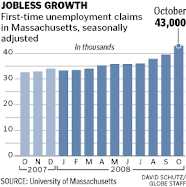































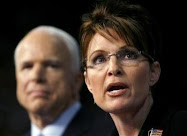



















































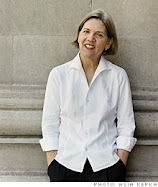



















.png)




































































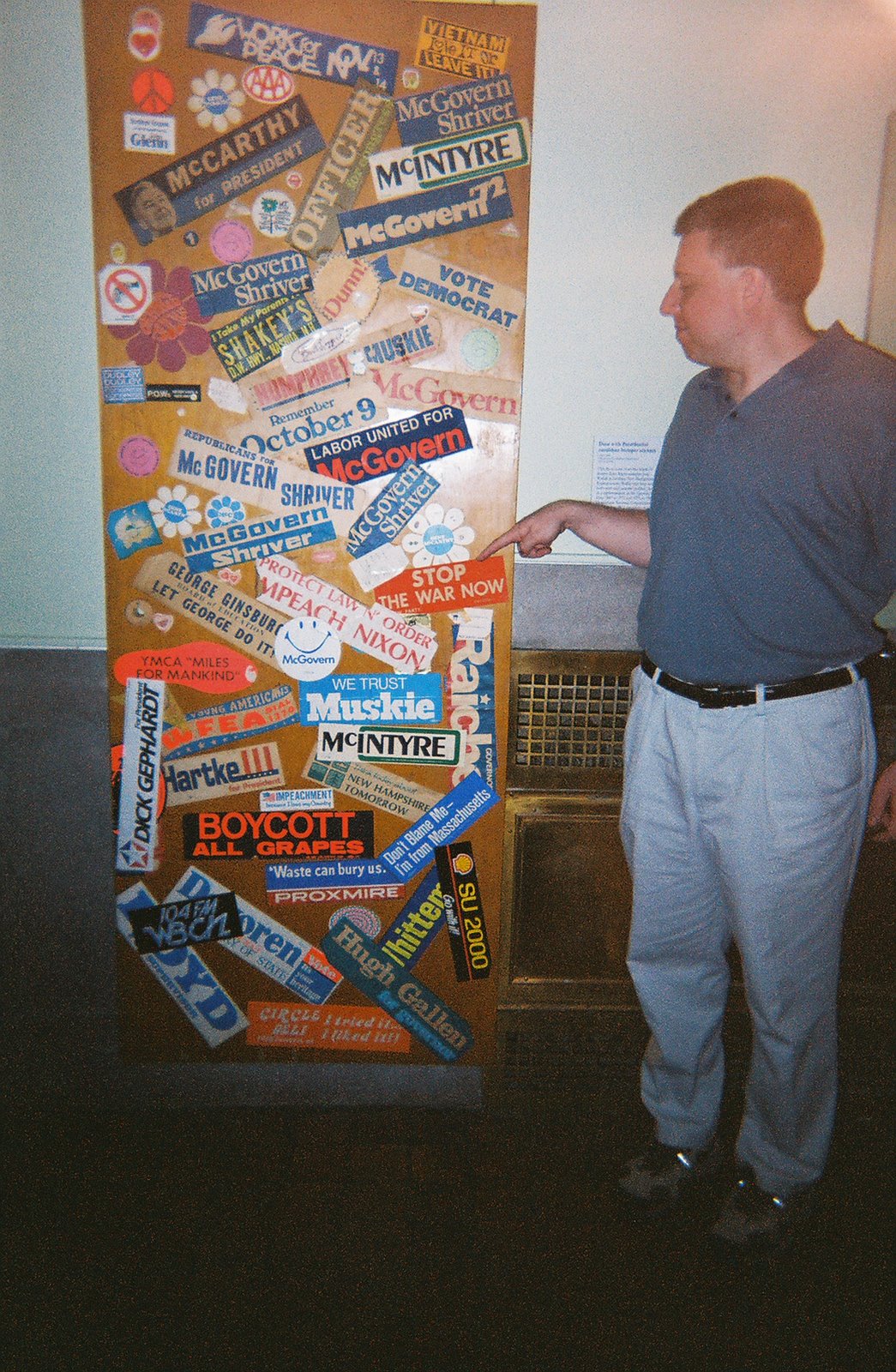








































































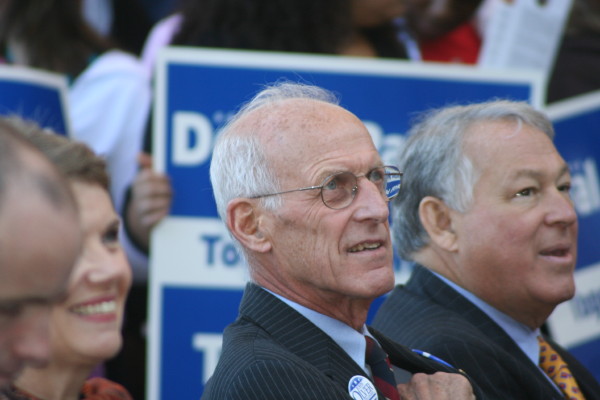























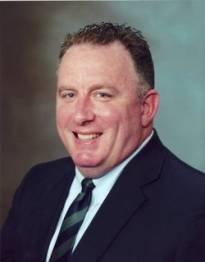








































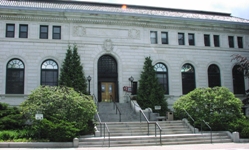

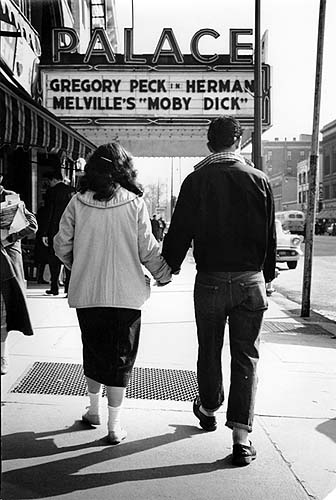
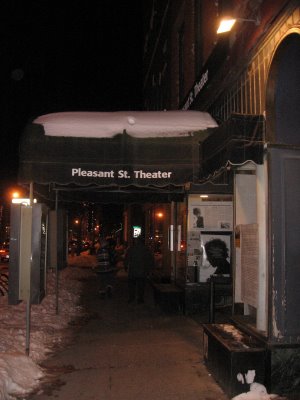





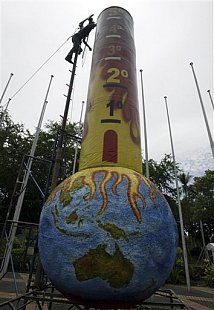
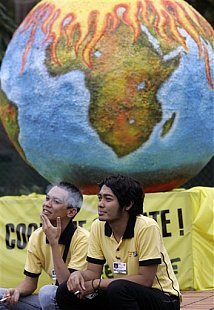



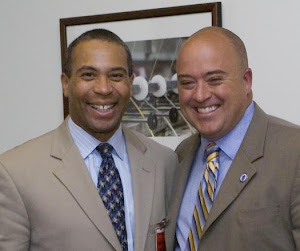
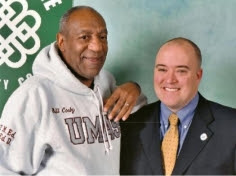










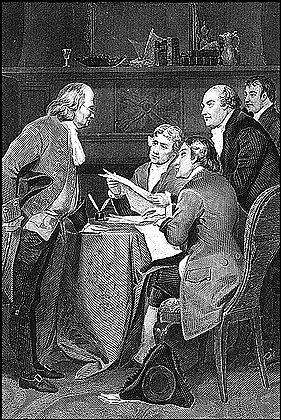






















No comments:
Post a Comment